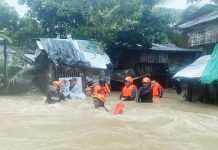
THE PHILIPPINES has suffered damaging floods despite the billions of pesos paid to contractors for hundreds of flood control projects, mostly in Bulacan province. The Senate has uncovered fake projects, overcosting and underperformance by contractors.
Some senators claim in recent hearings that corruption is so widespread. Investigators cannot cope and law enforcement against fraud and corruption is weak and prone to bribery aimed at covering up the anomalies. Corrupt politicians are part of the dirty deals, getting kickbacks from contractors after approving the flood control projects. This makes the contractors unable to implement the projects properly.
The people suffer; waterborne diseases spread; roads are impassable, preventing people from getting to and from work; small houses are deluged, with floodwaters rising knee-high, destroying property; and electricity is cut off, spoiling food. All these and more are causing hardship to millions of people. Their cost to the economy runs in the billions of pesos, and repairing the damage costs billions more.
All these, if the senators are to be believed, are due to corruption because the contractors failed to provide adequate drainage systems. This is exacerbated by natural forces at play. There is land subsistence and rapid urbanization, causing overcrowding and clogging canals and rivers, blocking water flow and ultimately contributing to the problem.
This will continue because we are facing a climate crisis, in which temperatures are rising due to the burning of coal, oil and gas, and progress is slow in constructing alternatives like wind and solar power plants.
Stronger and more frequent typhoons are the result of global warming. We can see that Europe is scorching, with its forests burning day and night, devastating huge areas. This destroys the important carbon sinks that can prevent temperatures from soaring.Then there is the warming of oceans, the greatest absorber of carbon dioxide that can slow the rise in global temperatures and keep them below the dangerous level of 1.5 degrees Celsius.
The oceans are the biggest absorbers of greenhouse gases. The intense heat is melting the glaciers in both the North and South poles. Glaciers in other places are also melting, flowing into the oceans and contributing to their rising levels. Warmer oceans change the biodiversity and cause schools of fish to migrate to cooler waters, disrupting the food chain.
Increasing temperatures also cause acidification that can lead to coral bleaching, reducing the fish population all the more, disrupting their migration and threatening other marine species. (To be continued)/PN







